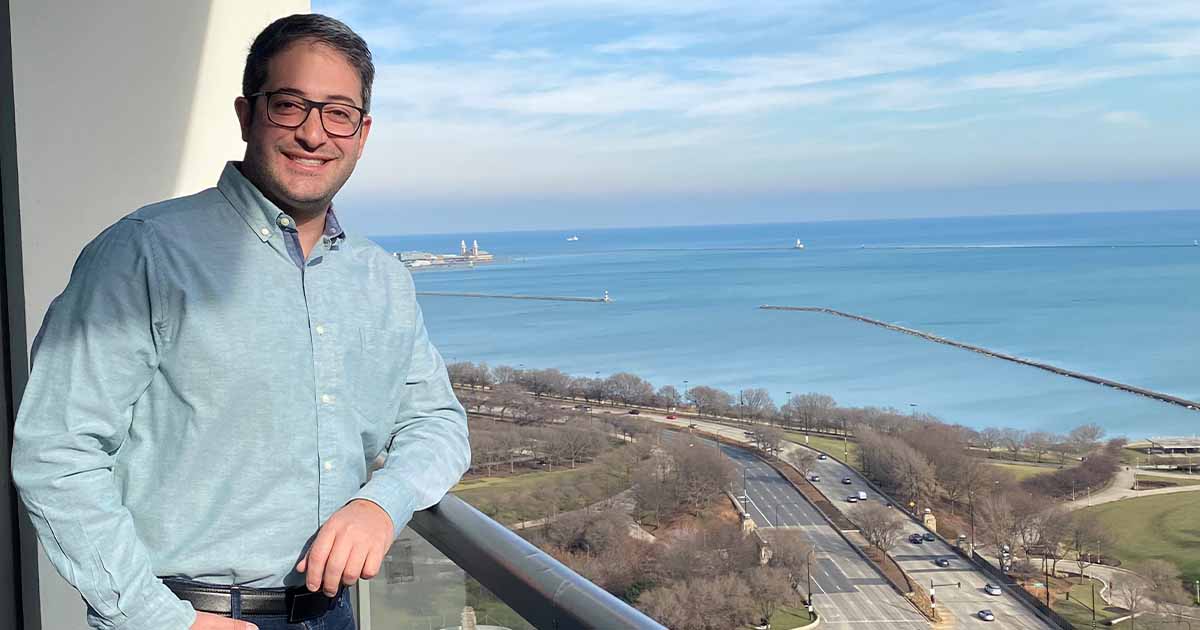
There are healthcare leaders who believe in technology and AI as the main solution for physicians’ burden and burnout, and leaders who are skeptical about AI’s ability to deliver those promises without compromising ethics, security and equity.
Dr. Anwar Jebran, primary care physician informaticist and clinical assistant professor at Oak Street Health, is a proponent of technology helping reduce physician burnout – specifically ambient AI powered by large language models. But he believes in a multifaceted approach to ending burnout.
He is one of four experts discussing AI and burnout on a panel at HIMSS25 in March in a session entitled “Physicians’ Burnout: Is AI the Only Path Forward?”
The session will delve into the pressing issue of physician burnout, offering a comprehensive exploration of how cutting-edge technology, strategic policy-making and effective burnout-relief strategies can collectively enhance the working lives of healthcare professionals.
Whether it’s innovative systems like ambient AI or tried-and-true, low-tech, high-impact strategies, the panel aims to provide practical analysis and conversation that can have a positive impact on daily practice.
Jebran is a board-certified internal medicine physician who believes in using technology to improve healthcare. He serves as a clinical assistant professor at the University of Illinois Health to support the implementation of the hospital-at-home program and foster international collaborations and partnerships in healthcare informatics.
We spoke with Jebran to get a sneak preview of his panel session.
Q. What is the overarching theme of your session and why is it especially relevant to healthcare and health IT today?
A. The overarching theme of the session is addressing physician and provider burnout while exploring innovative solutions that can make a tangible impact. Burnout remains a critical challenge in healthcare, driving significant costs through high turnover, decreased productivity and its toll on patient care quality.
The session will highlight the transformative potential of cutting-edge tools like ambient AI and large language models to alleviate this crisis. These technologies streamline workflows by reducing the administrative burden, enhancing clinical documentation and enabling more meaningful patient-provider interactions.
For example, ambient AI can seamlessly capture clinical data during the encounter, allowing physicians to focus on care, while LLMs assist with tasks such as composing SOAP notes and after-visit summary notes or supporting evidence-based clinical decision support.
Beyond AI, the session will also emphasize the value of low-tech, high-impact solutions in addressing burnout. Simple, scalable interventions such as optimizing workflows, improving communication between teams and reducing unnecessary tasks can profoundly restore balance and efficiency for healthcare teams.
This combination of innovation and practicality makes the discussion highly relevant in today’s healthcare and health IT landscape.
Q. Please talk a bit about ambient AI and LLMs as you will be presenting them in your HIMSS25 session.
A. The primary technology I will discuss in the session is ambient AI powered by large language models, transforming how healthcare providers manage clinical documentation and patient encounters. By leveraging advanced sophisticated voice recognition and LLMs, these tools can listen to patient encounters, generate and summarize SOAP notes, and create after-visit summaries with remarkable accuracy.
They also can draft orders, freeing providers from time-intensive administrative tasks. This ambient AI technology allows clinicians to focus more on patient care and less on documentation, significantly reducing the cognitive load and time spent on notes.
In the context of my session’s focus, this technology represents a groundbreaking solution to address provider burnout. By automating and optimizing these routine yet critical tasks, ambient AI saves time and helps restore the human connection in patient interactions.
It allows clinicians to engage more meaningfully with their patients, leading to better care and improved professional satisfaction. This dual impact on operational efficiency and provider well-being makes ambient AI a critical innovation for tackling burnout in today’s demanding healthcare environment.
Q. What is just one of the various takeaways you hope HIMSS25 attendees will leave your session with and be able to apply when they return home to their organizations?
A. One key takeaway I hope HIMSS25 attendees will leave our session with is the importance of adopting a multifaceted approach to addressing physician burnout – one that combines cutting-edge technologies like ambient AI with low-tech, high-value interventions.
Attendees will gain insights from national leaders on our panel on how advanced tools, such as ambient AI, can streamline documentation and reduce administrative burdens while also understanding the critical role of organizational culture in fostering provider well-being.
Whether through implementing innovative technology or prioritizing changes like improving workplace communication and investing in staff support programs, attendees will be equipped with actionable strategies to create meaningful change in their organizations.
“Physicians’ Burnout: Is AI the Only Path Forward?” is scheduled for Tuesday March 4 at 10:15 a.m. at HIMSS25 in Las Vegas.
Follow Bill’s HIT coverage on LinkedIn: Bill Siwicki
Email him: bsiwicki@himss.org
Healthcare IT News is a HIMSS Media publication
